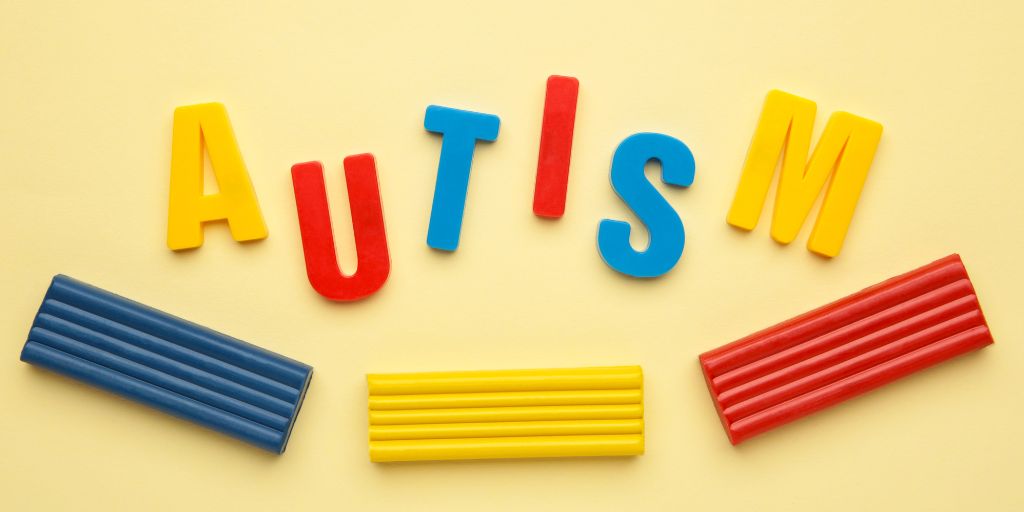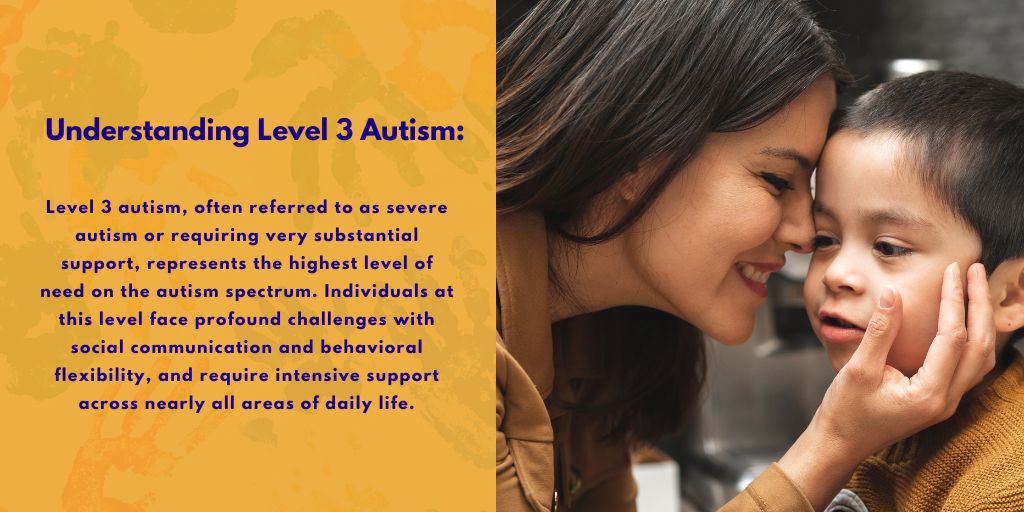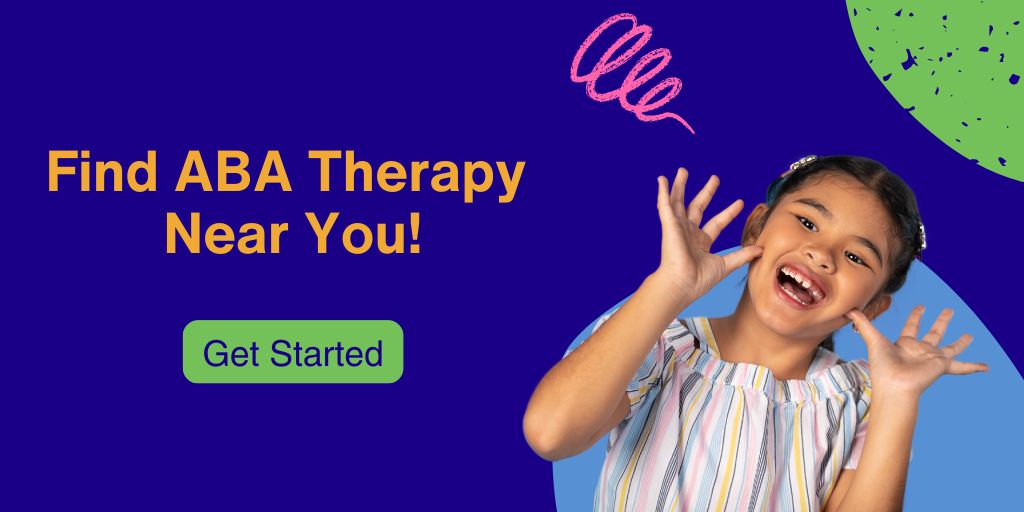
When your child is diagnosed with Level 3 Autism, it can feel overwhelming at first. This level of autism is characterized by significant challenges in communication, social skills, and daily functioning. Understanding what this means for your child is vital in creating a supportive environment that helps them thrive.
While every child’s needs are unique, Level 3 Autism often requires intensive support tailored to their specific strengths and challenges. You can help your child build meaningful connections and achieve their greatest potential by learning more.
At Applied ABC, we specialize in providing compassionate ABA therapy designed to meet the needs of children with autism. Explore our services or connect with our team of experienced clinicians today to learn how we can partner with you on your child’s journey. Call us at 866-352-5010 or submit our online application form to get started.
What is Level 3 Autism?
Level 3 Autism is one of the classifications on the autism spectrum as outlined in the 5th Edition of the Diagnostic and Statistical Manual of Mental Disorders (DSM-5). The DSM-5 defines autism spectrum disorder (ASD) in three levels based on the amount of support an individual needs. These levels enable professionals to provide more targeted diagnoses, helping to guide therapeutic planning and inform families about their child’s unique challenges and strengths.
Children diagnosed with Level 3 Autism face profound difficulties in social communication and exhibit highly inflexible behaviors. They are often nonverbal or may use only a few understandable words. Initiating or responding to social interactions is rare and may occur only when addressing immediate needs. When interacting, responses can be noticeably atypical, highlighting the severity of their challenges.
Marked rigidness in behavior is another defining characteristic. Changes to routines, transitioning between tasks, or unexpected events can lead to intense distress or behavioral responses. Additionally, these children often display repetitive or restrictive patterns, which can interfere with their daily functioning.
Understanding Level 3 Autism is vital for providing the tailored, intensive support your child needs. With the right interventions, they can still experience growth and improved quality of life.
Characteristics of Level 3 Autism
Level 3 Autism encompasses a range of challenges that affect a child’s ability to communicate, interact socially, and adapt to changes. Each trait within this classification presents unique hurdles that require intensive and tailored support.
By understanding these characteristics, parents and caregivers can better address their child’s needs and foster their growth and well-being.
Social and Speech Skills
Children with Level 3 Autism face substantial difficulties in communication and social engagement. Many are nonverbal, unable to use spoken language, or have extremely limited speech.
They may appear unaware of people around them, struggling to connect or recognize social cues. These challenges require compassionate, specialized support to help them express themselves and engage meaningfully with others.
Sensory Dysfunction
If diagnosed with level 3 Autism, your child may experience intense sensory dysfunction, ranging from extreme sensitivity to little or no response to sensory input. They may react strongly to bright lights, loud sounds, or physical touch because they find these sensations overwhelming.
Additionally, challenges with interoception, proprioception, and vestibular senses affect their ability to understand body signals, balance, and spatial orientation, often leading to distress or meltdowns in overstimulating environments.
Repetitive Behavior
Repetitive behaviors are a prominent characteristic of level 3 autism, often manifesting intensely in children who require high support. Actions such as persistent rocking, loud moaning, or slamming doors can be difficult to control and may occur frequently.
Unlike those with lower support needs, these behaviors are typically more extreme and less easily managed. However, you and your child can learn to manage these behaviors with the right therapy and support.
Cognitive Challenges
Level 3 Autism often means your child may face significant cognitive challenges, with many having IQs near or below 75. Despite appearances, some can learn to communicate using AAC devices, sign language, or spelling boards.
Terapia ABA can be incredibly effective, breaking down skills into manageable steps and fostering progress in communication, learning, and independence.
Physical Traits
Children diagnosed with this classification of autism often experience physical challenges, including epilepsy, chronic sleeplessness, and gastrointestinal problems. These co-occurring conditions can go unnoticed due to their difficulties in expressing discomfort or pain.
Undiagnosed issues may escalate, leading to greater distress and behavioral concerns. Therapy, combined with close monitoring and medical care, can identify underlying problems and provide targeted support to enhance your child’s comfort and overall quality of life.
Challenges Associated with Level 3 Autism
Level 3 Autism presents unique and complex challenges that significantly impact a child’s safety and quality of life. These difficulties often require intensive support and intervention to manage effectively. Below are some key challenges commonly observed in children with Level 3 Autism and their potential effects:
- Self-Injury: Children may engage in behaviors like head-banging or biting themselves, often as a way to cope with overwhelming emotions or sensory dysfunction, which can pose serious risks to their health.
- Wandering: A tendency to wander away from safe environments can put them in dangerous situations, requiring constant supervision and secure measures.
- Aggressive Behavior: Episodes of aggression, such as hitting or kicking, can occur in response to frustration or sensory overload, affecting relationships and safety.
Treatment Options for Level 3 Autism in Children
Supporting children with Level 3 Autism requires a multifaceted approach tailored to their unique needs. Applied ABC offers several effective treatment options designed to enhance your child’s quality of life and development.
- Medication: Medication can help manage co-occurring conditions like anxiety, aggression, or epilepsy, improving a child’s overall comfort and ability to engage in therapy.
- Basada en la Escuela: Applied Behavior Analysis (ABA) therapy focuses on breaking down tasks into manageable steps, reinforcing positive behaviors, and helping children build essential life skills.
- Creating the Right Environment: Ensuring a structured, sensory-friendly, and predictable environment minimizes overstimulation and fosters a sense of safety, facilitating learning and growth. This can be achieved with home-based therapy.
- Teaching Communication Skills: Using strategies like speech therapy or AAC devices enables children to express needs and emotions, reducing frustration and encouraging social interaction.
- Checking for Physical Issues: Regular health evaluations identify underlying problems like gastrointestinal discomfort or sleep disorders that can exacerbate behavioral challenges, allowing for timely intervention.
This holistic approach addresses both behavioral and physical aspects, paving the way for significant progress.
How To Get Help for your Child at Applied ABC
Your child deserves the best support to thrive, and at Applied ABC, we’re here to help. Our dedicated team will provide personalized care for your child by focusing on their unique needs and potential.
Call us at 866-352-5010 or submit our online application form to connect with experienced professionals who understand your child’s challenges. From expert therapy to tailored strategies, we’ll empower your child and support your family. Every moment counts, so reach out now and give your child the care they need to succeed.





